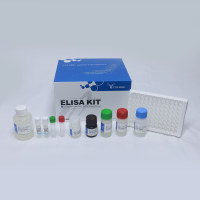Detection and Measurement of Necrosis in Plants
互联网
互联网
相关产品推荐

Invent Minute植物膜蛋白提取试剂盒 Minute Plasma Membrane Protein Isolation Kit for Plants 货号:SM-005-P
¥1500

促销中大鼠肿瘤坏死因子α(TNF-α)/Rat TNF-α/tumor necrosis factor (TNF superfamily,member 2)/Tnf;Tnfa;Tnfsf2;Tumor necrosis factor;Cachectin;TNF-alpha;Tumor necrosis factor ligand superfamily member 2;TNF-a) [Cleaved into: Tumor necrosis factor;membrane for/TNF/ELISA试剂盒
¥3420¥3800

γ-氨基丁酸试剂盒,用于样本中GABA含量检测,微量法,GABA Content Detection Kit
¥358

Invent Minute粘性植物叶绿体分离试剂盒 MinuteTM Chloroplast Isolation kit for Mucilaginous Plants 货号:CF-053
¥1500

NtrC | Thioredoxin reductase (TR/TRxR) (higher plants)
询价

